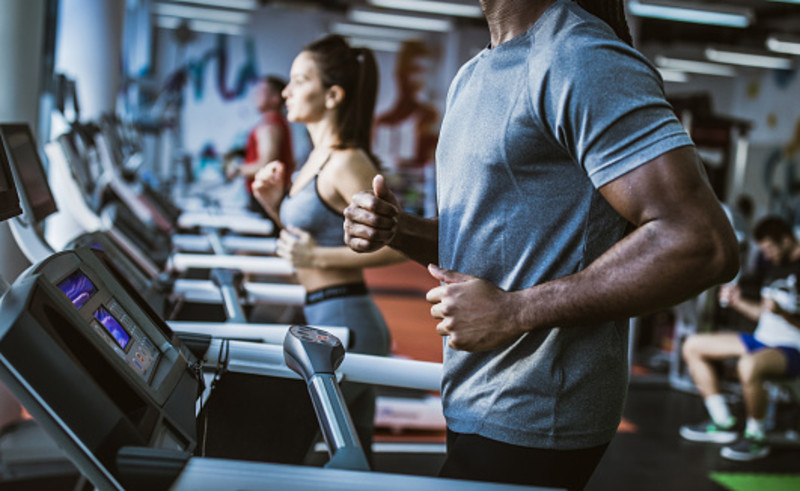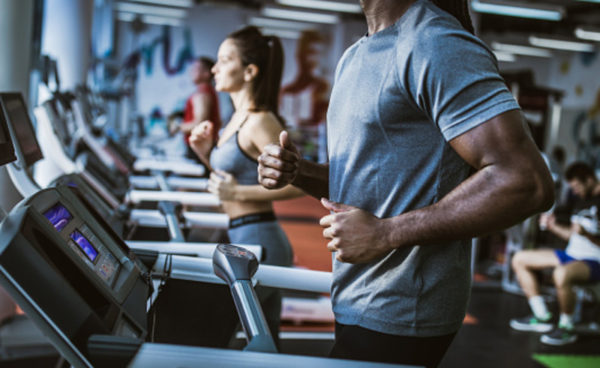
17 Mar To Your Health: Gyms & Germs:
Dr. Alan Safdi, a world-renowned internist and gastroenterologist with encyclopedic knowledge of mind-body wellness and preventative medicine, posts on Telluride Inside… and Out under the banner of “To Your Health.” His blogs feature the most current information in his field: health, wellness, and longevity.
At The Peaks in Mountain Village Dr. Alan once again leads an intensive wellness retreat in July, August and September using an evidence-based, scientific approach to health and longevity. He will be assisted by yoga and Pilates instructors, athletic trainers, dietitians, chefs at the Peaks For all programs, go to his Telluride Longevity Institute website or sign up by calling 1-877-448-5416.
This week, Dr. Alan talks about gyms and germs: What you need to know to stay healthy! Something to ponder in the future now that the coronavirus just closed down your favorite work-out facility.

Should you worry about germs at the gym?
With the novel coronavirus (COVID-19) becoming an official pandemic, infection control measures are of utmost importance these days. But, it’s probably not only coronavirus you need to worry about. Pathogens like Staphylococcus and various odd and assorted fungi and viruses are always lurking at any gym. But, there are steps you can take to protect yourself and others and they are part of what is considered “gym etiquette.”
These measures are all appropriate in the age of COVID-19.
Remember to always wash your hands correctly or use alcohol sanitizer correctly before and after touching any mucus membranes or even blowing your nose. Also make sure to wash or use alcohol on both palms followed by rubbing your nails into the opposite palm, followed by palm to the back of each hand and interlacing your fingers. Do not forget your thumb.
In other words this is an excellent time to put your infectious disease training to good use.
Infection control measures are handy to have when you are dealing with outbreaks like COVID-19, flu, or even SARS – especially in the gym, where hygiene and infectious disease control, while not widely practiced, seem to be a concern for many.
Indeed, proper gym etiquette—including good hygiene practices—seems to be the biggest bugaboo of over 1,000 gym-users, according to a recent survey published by Treadmill Reviews. And, results also show that gym-users are not very good at following proper work-out etiquette, which includes wiping down equipment after each use.
In fact, 35% of men reported that they never wiped down weight machines. Among women, over 25% admitted to never wiping down cardio equipment. Finally, 38.4% of gym-users reported not wiping down equipment in the afternoon; 21.2% did not do so in the evening. What’s more, over 50% of gym-users have seen others not wash their hands in the bathroom and then go out and use gym equipment.
Frankly, that’s a lot of germs.
The following are a few of the pathogens that are probably prospering—or trying to—in any given gym, at any given moment:
Staphylococcus and methicillin-resistant Staphylococcus aureus (MRSA). These two baddies love gym equipment and can thrive there.
Here are some of the steps to take to protect yourself:
• Cover any open wounds before you start exercising. Don’t touch your face after you have touched any surface, particularly commonly used ones, like door or locker handles, and fitness equipment.
• After exercising, take a shower with soap (preferably antimicrobial) to remove any germs that may be on your skin.
• Wash and dry your gym clothes regularly; don’t just leave them in your duffel bag until your next workout, which could be days away.
Dermatophytes. Dermatophytes can cause all sorts of problems, including athlete’s food, jock itch, and ringworm. They include Tinea barbae, T. capitis, T. corporis, T. cruris, T. manuum, T. pedis, and T. unguium. Unfortunately, dermatophytes love a locker room environment, which can be moist, damp, and wet—the perfect conditions for flourishing.
Some rules to help prevent transmission of these pathogens include the following:
• Opt for moisture-wicking materials for your clothes and even shoes. This helps the sweat evaporate and reduces chances of causing a moist, wet environment.
• Don’t walk across the gym floor barefooted or even in your socks. You are just asking for fungi to hop on board and come home with you.
• Wear flips-flops in the locker room and the shower.
• Don’t sit on any benches without clothes on.
• Always change out of your sweaty clothes when you get home. Air them out and wash them.
• Try to rotate your sneakers frequently. They can get pretty sweaty and need a chance to air out. Better yet, throw them in the wash occasionally, or put them outside in the sun to discourage proliferation of all those dermatophytes you may have picked up.
Viruses. A lot of viruses can take up residence in a gym, including HPV, herpes gladiatorum, and airborne respiratory viruses.
Here are a few rules to follow to avoid transmission:
• Don’t go to the gym when you’re sick. Conversely, when you see people who are visibly sick at the gym, try to go to the opposite side of the room. Don’t use the equipment they have used or clean the surfaces thoroughly before using.
• Wash your hands often. Remember that things like doorknobs, touchpads, cell phones, locker handles, and locks can all carry germs. Wash your hands after you touch any of these, and don’t touch your face.
Dirtiest places
The sheer number of people who go to the gym and use the equipment make gyms one of the dirtiest places around.
The following is a list of some of the dirtiest things you might encounter:
Free weights, weight machines, and exercise balls. A lot of (sweaty) people handle these pieces of equipment day in and day out, making them among the dirtiest objects on hand. Try to wipe down these exercise tools with disinfectant both before and after you use them. If you can’t find sanitizing wipes or antibacterial spray ask the gym staff or carry antibacterial gel with you and rub your hands before and after your workout.
Treadmills, ellipticals, spinning bikes. People are more likely to wipe down these pieces of equipment than the free weights, but they are still not clean. Some researchers have even found Staphylococcus, fungi, and yeast on the seats of gym bikes. Wipe these machines and seats with disinfectant before and after each use.
Pool. Cryptosporidium is chlorine-resistant and causes most of the outbreaks of pool-related diarrhea, according to the CDC. Pseudomonas—which can cause well-known conditions such as swimmer’s ear and hot tub rash—can also be present in a pool. Gyms should post details of pool upkeep, including a cleaning schedule. Check the listings. And also check the smell: When chlorine interacts with microorganisms, it generates a stronger smell. A good rule of thumb: The stronger the chlorine smell, the dirtier the pool. Always wear goggles and a swimming cap or earplugs.
Now is not a time to forget to wash your hands adequately or use alcohol (60% at least) sanitizer. Before you ever touch your face make sure your hands are clean and then also clean your hands after.
Dr. Alan, more:

Dr. Alan Safdi is board-certified in Internal Medicine and in Gastroenterology and is a Fellow of the American College of Gastroenterology. A proven leader in the healthcare arena, he has been featured on the national program, “Medical Crossfire” and authored or co-authored numerous medical articles and abstracts. Safdi has been involved in grant-based and clinical research for 30+ years and is passionate about disease prevention and wellness, not just fixing what has gone wrong. He is an international lecturer on the subjects of wellness, nutrition and gastroenterology.
And back by popular demand, this summer, in partnership with the Peaks’ Spa, Dr. Safdi returns with his three, week-long wellness intensives titled Live Longer Retreat.
Again, using an evidence-based, scientific approach to health and longevity and featuring an experienced staff of medical professionals, personal trainers, Pilates and yoga instructors, dietitians, and chefs, the focus is on your unique wellness profile. Each Live Longer Retreat is one-of-kind in the U.S. Those intensives, limited to only 10 – 15 participants, will include personal consultations, hiking, spinning, yoga, Pilates, talks and demonstrations related to nutrition, cooking classes, and more.
Go here to read a review of the experience by one very satisfied participant.


Sorry, the comment form is closed at this time.